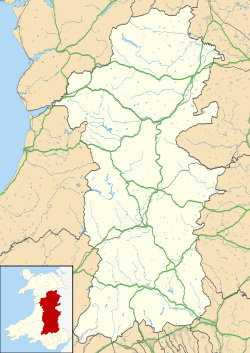| Llangattock | |
|---|---|
| Village and community | |
 The village and church from the canal, with Crickhowell beyond. | |
Location within Powys | |
| Principal area | |
| Country | Wales |
| Sovereign state | United Kingdom |
| Police | Dyfed-Powys |
| Fire | Mid and West Wales |
| Ambulance | Welsh |
Llangattock (Welsh : Llangatwg) is a village, community and electoral ward in the Brecon Beacons National Park in Powys, Wales. It lies in the Usk Valley just across the river from the town of Crickhowell. The Monmouthshire and Brecon Canal passes through the village en route between Brecon and Pontypool. [1] It is in the historic county of Breconshire.
According to the 2011 UK census the population of the community was 999, [2] with the village itself having a population of around 660. [3]
Llangattock elects a community council of ten members who, amongst other things, are responsible for the running of Llangattock cemetery. [4] Llangattock electoral ward also elects one county councillor to Powys County Council.


